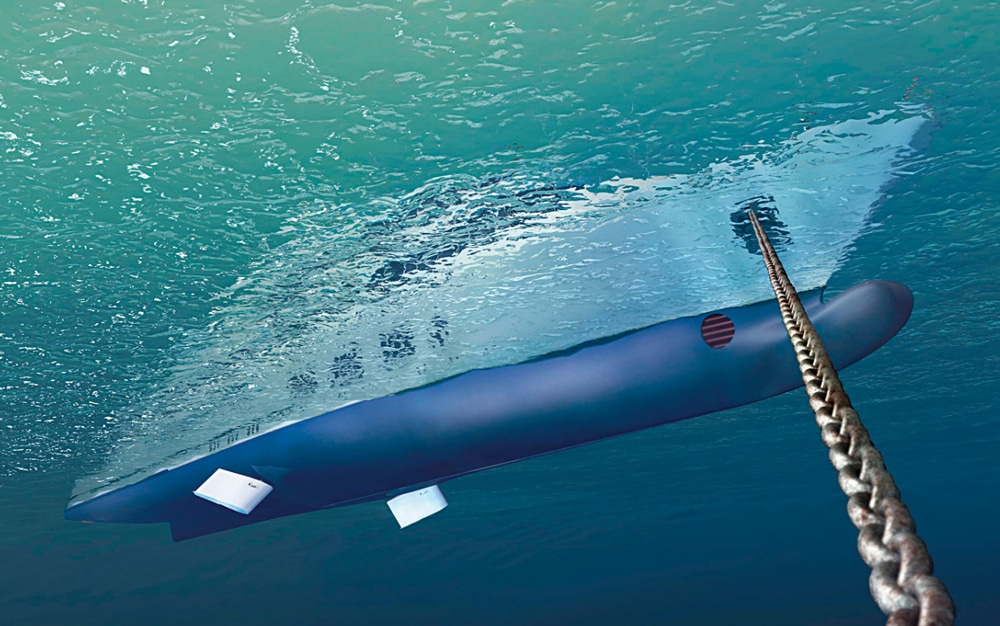
At-Anchor Stabilization Systems
Stabilizing a yacht under way is one thing; stopping the roll when you’re sitting still is another. Flume tanks are a possibility for newly built superyachts, but existing and smaller yachts have better options.
The first, known as zero speed or at-anchor stabilization, is a variant of the active fin stabilizer system that has proved itself aboard yachts for many years. The differences are found in the fins, the actuators and the control system. There’s little the user will notice about the controls except a new selector for the “underway” and “anchored” settings.
The fins are another matter. Standard fins depend on the forward speed of the yacht to create lift that is transferred to the hull to counteract roll. To keep the size of the fin actuator and the resultant power to a minimum, the location of the shaft on which the fin rotates is as near to the hydrodynamic center of effort as possible, creating a balance of forces forward and aft of the shaft. With a yacht at anchor, there is no forward speed, so the fins operate less like wings and more like paddles. As such, they have a much lower aspect ratio, being considerably longer fore-and-aft. The shaft location changes too, moving forward, since balance is not as important as the total sweep of the trailing edge of the fin. As with a paddle, the farther it moves, the more force it delivers.
This difference brings up two very important questions: Can you convert to one of the new systems, and should you? In answer to the first question, yes, you can often retrofit an existing, active fin stabilization system to enjoy at-anchor benefits. You’ll need a new or upgraded control system, and while you may be able to utilize your existing fins, they will not be as effective as new, longer fins. If you go to new fins, they’ll require more power, and your existing actuator may not be up to the task. Some actuators can be modified to provide more oomph, but in other cases, an upgrade or replacement will be required. The system manufacturers can assist you with this determination, technically and dollarwise, on a case-by-case basis.
Yachts can also enjoy at-anchor stabilization with gyroscopic systems. Interestingly, about 50 years ago, there were dozens of yachts with gyro stabilizers, but they weren’t as compact or sophisticated as today’s units are. Gyros fell out of favor when active fins became available, but with new designs and materials, they are once again competitive. They operate on the same principle as the kid’s toy of the same name — which is, essentially, that it takes considerable force to displace a spinning wheel. The more massive the wheel and the faster you spin it, the greater the force. That force, transferred into the hull structure through the gyro’s foundation, counteracts the rolling of your yacht.
Gyro stabilizers are available in a number of sizes, and several smaller units can be installed instead of one large one to achieve equivalent stabilization. They can be located almost anywhere on the yacht, so they offer flexibility in installation and don’t have any parts exposed to the sea. The downside lies in that connection between weight and force. These units contain heavy flywheels that can add a noticeable amount of displacement to your yacht, and the machinery generally occupies more interior volume than fin systems do.
Next month, we’ll look at trim control and integrated motion-control systems that reduce both roll and pitch for the ultimate in stabilization.









